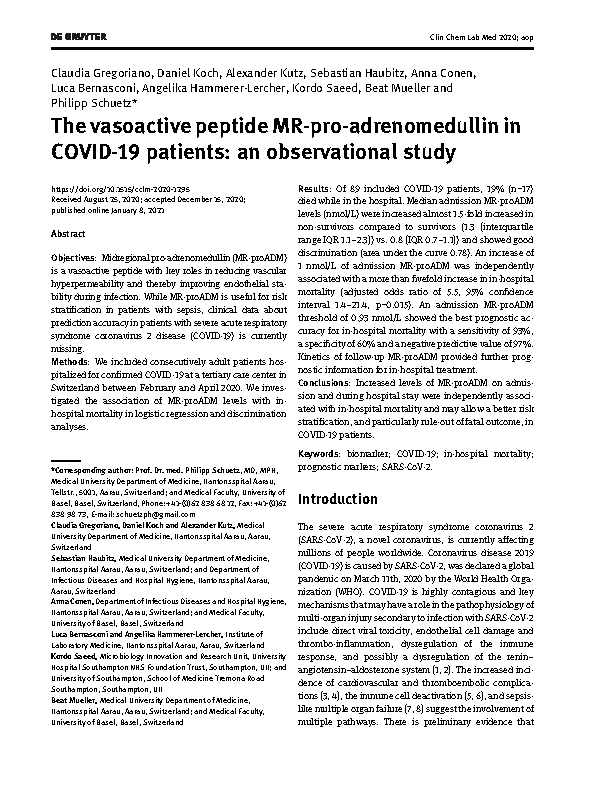04 Mar The vasoactive peptide MR-pro-adrenomedullin in COVID-19 patients: an observational study
Gregoriano C, Koch D, Kutz A, Habitz S, Conen A, Bernasconi L, et al.
ABSTRACT
Objectives: Midregion proadrenomedullin (MR-proADM) is a vasoactive peptide with key functions in reducing vascular hyperpermeability and therefore improving endothelial stability during infection.
Although MR-proADM is useful for risk stratification in patients with sepsis, there are no clinical data on predictive accuracy in patients with severe acute respiratory diseases, such as coronavirus syndrome disease 2 (COVID-19).
Methods: Adult patients hospitalized with confirmed COVID-19 in a tertiary care center in Switzerland between February and April 2020 were included.
The association of MR-proADM levels with mortality was investigated in logistic regression and discrimination analysis.
Results: Of 89 patients included for COVID-19, 19% (n = 17) died while in hospital.
- Median MR-proADM levels (nmol/L) at admission increased almost 1,5 times more in non-survivors compared to survivors (1,3 [QR interquartile range 1.1–2.3]) vs 0.8 [IQR 0.7- 1.1]) and showed good discrimination (area under the curve 0,78).
- A 1 nmol/L increase in MR-proADM over admission values was independently associated with a more than five-fold increase in in-hospital mortality (adjusted odds ratio 5,5, 95% confidence interval, 1,4). 21,4-0,015, p = XNUMX).
- A threshold of 0.93 nmol/L MR-proADM at admission showed the best prognostic accuracy for in-hospital mortality with:
- a sensitivity of 93%,
- a specificity of 60% and,
- a negative predictive value of 97%.
Follow-up kinetics of MR-proADM provided additional prognostic information for in-hospital treatment.
Conclusions: Increased MR-proADM levels on admission and during hospital stay were independently associated with in-hospital mortality and may allow for better risk stratification; and particularly rule out a fatal outcome in patients with COVID-19.



